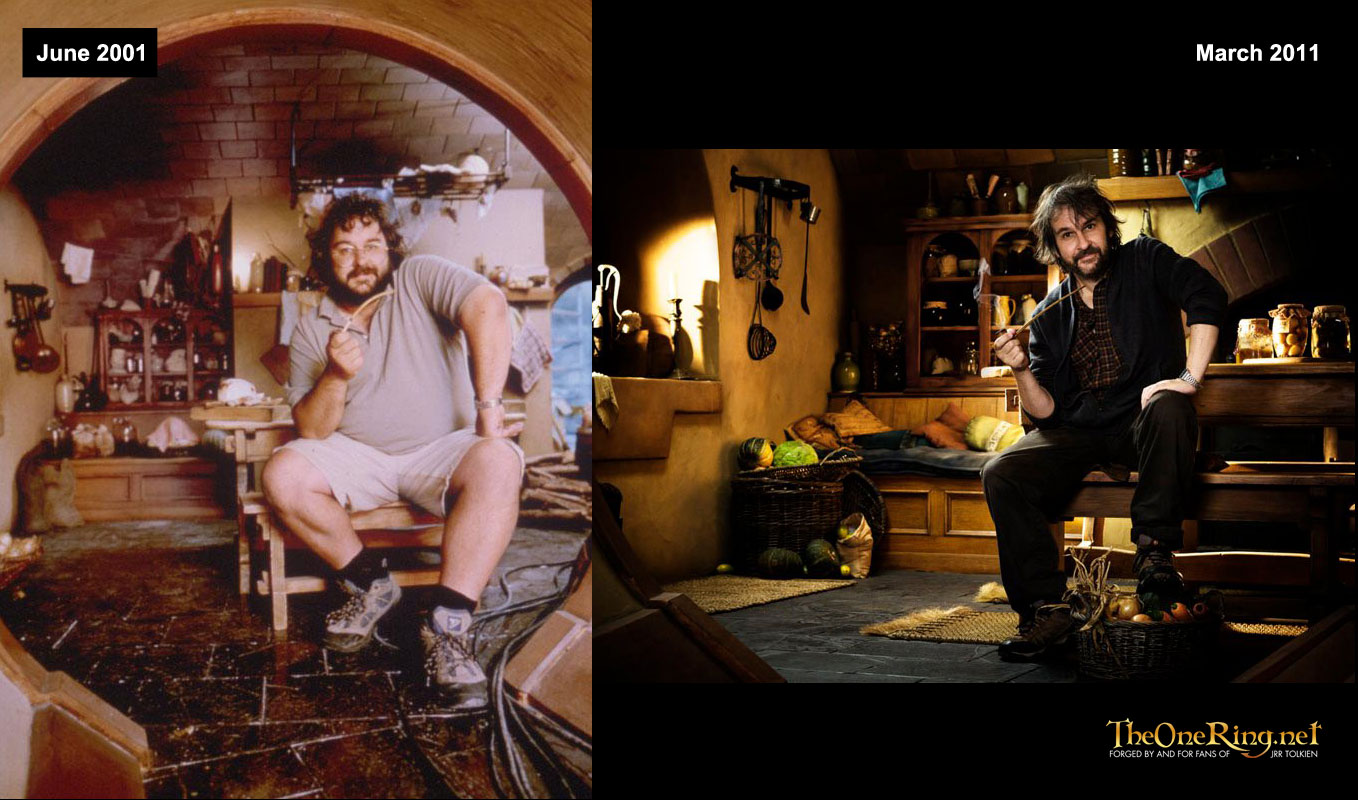no other way to watch it IMO
**** Official The Hobbit Info Thread ****
143,226 Views |
982 Replies |
Last: 9 yr ago by Fat Bib Fortuna
After an arduous 7 years and 3 months...
The Hobbit is finally filming!
The Hobbit is finally filming!
quote:
PRODUCTION BEGINS IN NEW ZEALAND ON THE HOBBIT, PETER JACKSON’S TWO FILM EPIC ADAPTATION OF J.R.R. TOLKIEN’S TIMELESS CLASSIC
March 20th, 2011
In a hole in the ground there lived a Hobbit…
Wellington, NZ, March 21, 2011—Production has commenced in Wellington, New Zealand, on “The Hobbit,” filmmaker Peter Jackson’s two film adaptation of J.R.R. Tolkien’s widely read masterpiece.
“The Hobbit” is set in Middle-earth 60 years before Tolkien’s “The Lord of the Rings,” which Jackson and his filmmaking team brought to the big screen in the blockbuster trilogy that culminated with the Oscar-winning “The Lord of the Rings: The Return of the King.”
The two films, with screenplays by Fran Walsh, Philippa Boyens, Guillermo del Toro and Peter Jackson, will be shot consecutively in digital 3D using the latest camera and stereo technology. Filming will take place at Stone Street Studios, Wellington, and on location around New Zealand.
“The Hobbit” follows the journey of title character Bilbo Baggins, who is swept into an epic quest to reclaim the lost Dwarf Kingdom of Erebor, which was long ago conquered by the dragon Smaug. Approached out of the blue by the wizard Gandalf the Grey, Bilbo finds himself joining a company of thirteen dwarves led by the legendary warrior, Thorin Oakensheild. Their journey will take them into the Wild; through treacherous lands swarming with Goblins and Orcs, deadly Wargs and Giant Spiders, Shapeshifters and Sorcerers.
Although their goal lies to the East and the wastelands of the Lonely Mountain first they must escape the goblin tunnels, where Bilbo meets the creature that will change his life forever … Gollum.
Here, alone with Gollum, on the shores of an underground lake, the unassuming Bilbo Baggins not only discovers depths of guile and courage that surprise even him, he also gains possession of Gollum’s “precious” ring that holds unexpected and useful qualities … A simple, gold ring that is tied to the fate of all Middle-earth in ways Bilbo cannot begin to know.
Martin Freeman takes the title role as Bilbo Baggins and Ian McKellen returns in the role of Gandalf the Grey. The Dwarves are played by Richard Armitage (Thorin Oakenshield), Ken Stott (Balin), Graham McTavish (Dwalin), William Kircher (Bifur) James Nesbitt (Bofur), Stephen Hunter (Bombur), Rob Kazinsky (Fili), Aidan Turner (Kili), Peter Hambleton (Gloin), John Callen (Oin), Jed Brophy (Nori), Mark Hadlow (Dori) and Adam Brown (Ori). Reprising their roles from “The Lord of the Rings” trilogy are Cate Blanchett as Galadriel, Andy Serkis as Gollum and Elijah Wood as Frodo. Jeffrey Thomas and Mike Mizrahi also join the cast as Dwarf Kings Thror and Thrain, respectively. Further casting announcements are expected.
“The Hobbit” is produced by Peter Jackson and Fran Walsh, alongside Carolynne Cunningham. Executive producers are Ken Kamins and Zane Weiner, with Philippa Boyens as co-producer. The Oscar-winning, critically acclaimed “The Lord of the Rings” trilogy, also from the production team of Jackson and Walsh, grossed nearly $3 billion worldwide at the box office. In 2003, “The Return of the King” swept the Academy Awards, winning all of the 11 categories in which it was nominated, including Best Picture – the first ever Best Picture win for a fantasy film. The trilogy’s production was also unprecedented at the time.
Among the creative behind-the-scenes team returning to Jackson’s crew are director of photography Andrew Lesnie, production designer Dan Hennah, conceptual designers Alan Lee and John Howe, composer Howard Shore and make-up and hair designer Peter King. Costumes are designed by Ann Maskrey and Richard Taylor.
Taylor is also overseeing the design and production of weaponry, armour and prosthetics which are once again being made by the award winning Weta Workshop. Weta Digital take on the visual effects for both films, led by the film’s visual effects supervisor, Joe Letteri. Post production will take place at Park Road Post Production in Wellington.
“The Hobbit” films are co-produced by New Line Cinema and MGM, with New Line managing production. Warner Bros Pictures is handling worldwide theatrical distribution, with select international territories as well as all international television licensing being handled by MGM. The two films are planned for release in late 2012 and 2013, respectively.
whoop!
whoop!
The official Hobbit blog has gone live here.
I expect it will be a great place to find on-set pictures, videos, interviews, etc. Looking forward to the stuff that we'll get to see in the next few weeks.
I expect it will be a great place to find on-set pictures, videos, interviews, etc. Looking forward to the stuff that we'll get to see in the next few weeks.
At last, some proof production has actually started!
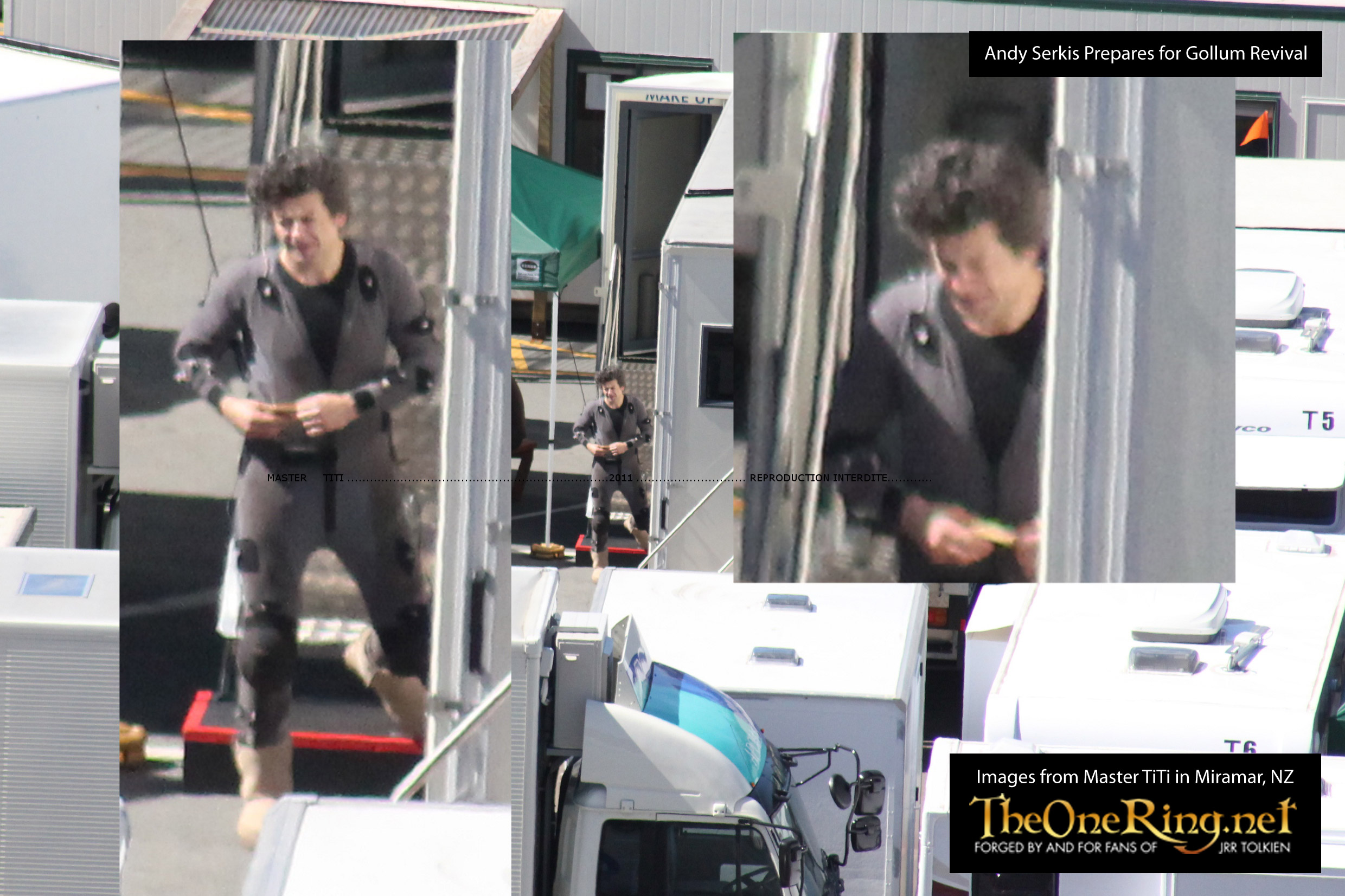

and is this a pic of freeman as bilbo?
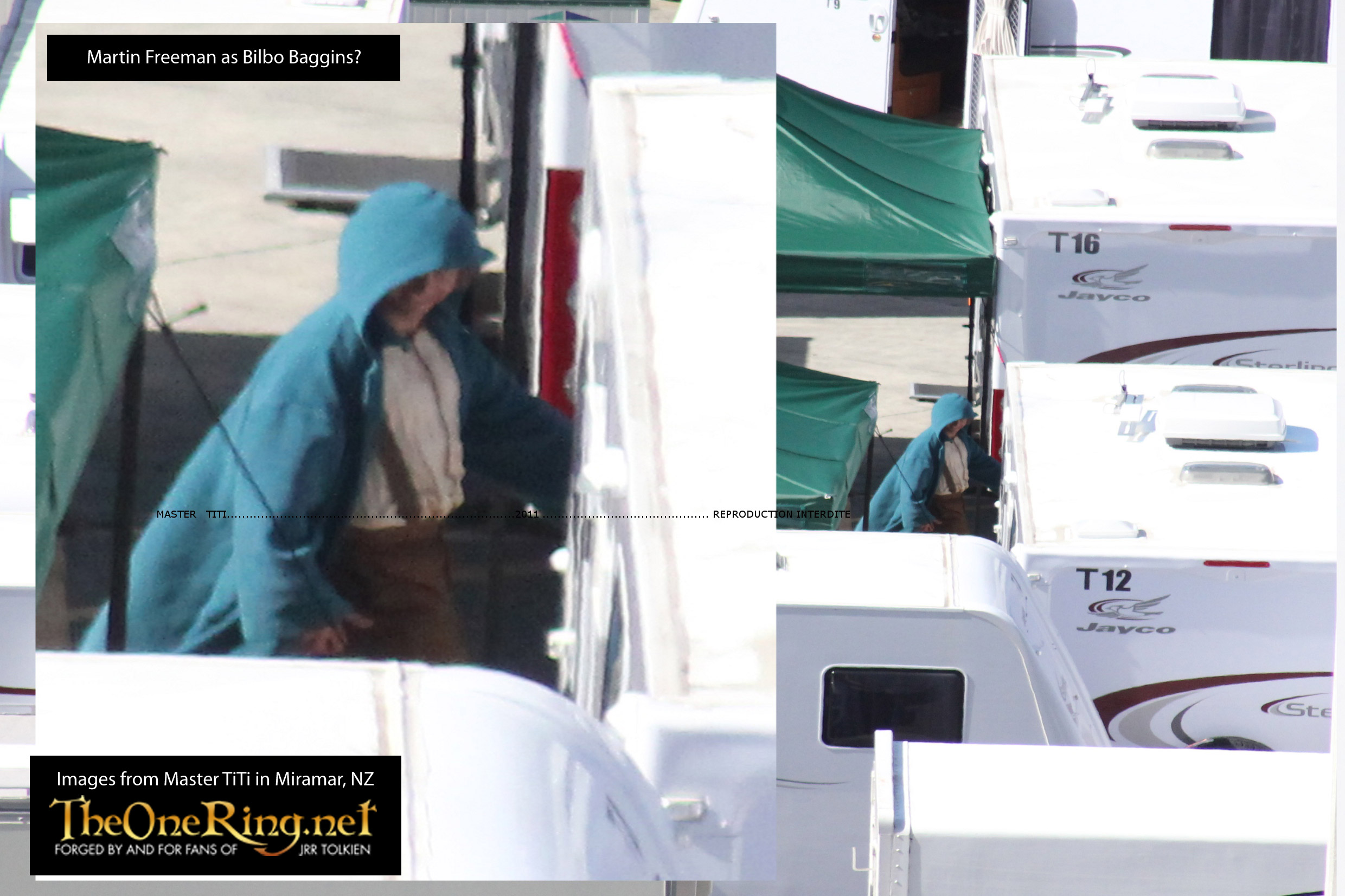

from PJ's facebook page
quote:
Time for an update. Actually, we've been intending to kick off with a video, which is almost done, so look out for that in the next day or two. In the meantime, I thought I'd address the news that has been reported about us shooting THE HOBBIT at 48 frames per second, and explain to you what my thoughts are about this.
We are indeed shooting at the higher frame rate. The key thing to understand is that this process requires both shooting and projecting at 48 fps, rather than the usual 24 fps (films have been shot at 24 frames per second since the late 1920's). So the result looks like normal speed, but the image has hugely enhanced clarity and smoothness. Looking at 24 frames every second may seem ok--and we've all seen thousands of films like this over the last 90 years--but there is often quite a lot of blur in each frame, during fast movements, and if the camera is moving around quickly, the image can judder or "strobe."
Shooting and projecting at 48 fps does a lot to get rid of these issues. It looks much more lifelike, and it is much easier to watch, especially in 3-D. We've been watching HOBBIT tests and dailies at 48 fps now for several months, and we often sit through two hours worth of footage without getting any eye strain from the 3-D. It looks great, and we've actually become used to it now, to the point that other film experiences look a little primitive. I saw a new movie in the cinema on Sunday and I kept getting distracted by the juddery panning and blurring. We're getting spoilt!
Originally, 24 fps was chosen based on the technical requirements of the early sound era. I suspect it was the minimum speed required to get some audio fidelity out of the first optical sound tracks. They would have settled on the minimum speed because of the cost of the film stock. 35mm film is expensive, and the cost per foot (to buy the negative stock, develop it and print it), has been a fairly significant part of any film budget.
So we have lived with 24 fps for 9 decades--not because it's the best film speed (it's not by any stretch), but because it was the cheapest speed to achieve basic acceptable results back in 1927 or whenever it was adopted.
None of this thinking is new. Doug Trumbull developed and promoted a 60 frames per second process called ShowScan about 30 years ago and that looked great. Unfortunately it was never adopted past theme park use. I imagine the sheer expense of burning through expensive film stock at the higher speed (you are charged per foot of film, which is about 18 frames), and the projection difficulties in cinemas, made it tough to use for "normal" films, despite looking amazing. Actually, if anybody has been on the Star Tours ride at Disneyland, you've experienced the life like quality of 60 frames per second. Our new King Kong attraction at Universal Studios also uses 60 fps.
Now that the world's cinemas are moving towards digital projection, and many films are being shot with digital cameras, increasing the frame rate becomes much easier. Most of the new digital projectors are capable of projecting at 48 fps, with only the digital servers needing some firmware upgrades. We tested both 48 fps and 60 fps. The difference between those speeds is almost impossible to detect, but the increase in quality over 24 fps is significant.
Film purists will criticize the lack of blur and strobing artifacts, but all of our crew--many of whom are film purists--are now converts. You get used to this new look very quickly and it becomes a much more lifelike and comfortable viewing experience. It's similar to the moment when vinyl records were supplanted by digital CDs. There's no doubt in my mind that we're heading towards movies being shot and projected at higher frame rates.
Warner Bros. have been very supportive, and allowed us to start shooting THE HOBBIT at 48 fps, despite there never having been a wide release feature film filmed at this higher frame rate. We are hopeful that there will be enough theaters capable of projecting 48 fps by the time The Hobbit comes out where we can seriously explore that possibility with Warner Bros. However, while it's predicted that there may be over 10,000 screens capable of projecting THE HOBBIT at 48 fps by our release date in Dec, 2012, we don’t yet know what the reality will be. It is a situation we will all be monitoring carefully. I see it as a way of future-proofing THE HOBBIT. Take it from me--if we do release in 48 fps, those are the cinemas you should watch the movie in. It will look terrific!
Time to jump in the car and drive to Bag End for the day. Video coming soon!
thanks 07. it's awesome to finally see some behind the scenes production!
[This message has been edited by sharkenleo (edited 4/14/2011 11:47a).]
[This message has been edited by sharkenleo (edited 4/14/2011 11:47a).]
And I love that we see the first scene at the end.
I love getting these updates about the hobbit! That video gets me so pumped up! I'm gonna go listen to some lord of the rings soundtrack now.
Not to keep beating the same dead horse year after year, but I'd still like a little more info about the second movie. Or if they are really just stretching the book, what the breakdown will be between the two films.
[This message has been edited by amercer (edited 4/14/2011 4:02p).]
[This message has been edited by amercer (edited 4/14/2011 4:02p).]
quote:
over 10,000 screens capable of projecting THE HOBBIT at 48 fps by our release date in Dec, 2012,
There we have it. The sheer number of frames being shown per second per theater will bring about an apocalypse. That's exactly what the Mayans were talking about.
it's so cool to see familiar faces from the LOTR behind the scenes stuff in that video. richard taylor, john howe, alan lee...so glad these guys and the rest of the team are working with jackson again for the hobbit. proven awesomeness
hot damn i'm already excited
hot damn i'm already excited
six-to-midnight
Haha that's pretty good..... same reaction I was getting
Kazinsky leaves film for health reasons
http://uk.movies.yahoo.com/blog/article/168485/eastenders-star-quits-hobbit-film.html
http://uk.movies.yahoo.com/blog/article/168485/eastenders-star-quits-hobbit-film.html
Read that a few days ago, sad to hear. But who knows, the replacement might actually end up being better.
Viggo Mortensen was brought in at the last minute to play Aragorn.
Viggo Mortensen was brought in at the last minute to play Aragorn.
It's a minor role. Who cares? That would be like being upset that they picked someone else to play the LF in a baseball movie.
That was quick. From PJ's fb:
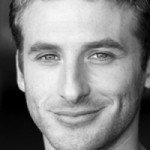
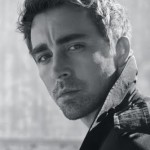
Fili and Thranduil
quote:
I'm very pleased to be welcoming two new cast members to our team.
Dean O'Gorman will be playing Fili. Dean's a terrific Kiwi actor, who I am thrilled to be working with. He's recently been in an excellent TV series down here called "The Almighty Johnsons", and I should let fans of that show know that our shooting schedule allows Dean to continue with a second series next year. Dean will be joining us next week.
I'm also pleased to announce that Lee Pace will be playing the Elven King Thranduil. Casting these Tolkien stories is very difficult, especially the Elven characters, and Lee has always been our first choice for Thranduil. He's going to be great. We loved his performance in a movie called "The Fall" a few years ago, and have been hoping to work with him since. When we were first discussing who would be right for Thranduil, Lee came into mind almost immediately.
It's been a great week, and I'm looking forward to the next few. It's going to be interesting...
More soon.
Cheers,
Peter J


Fili and Thranduil
Saoirse Ronan says she will not be in the hobbit.
http://www.youtube.com/watch?v=DJIiOOEHARc&feature=mfu_in_order&list=UL
On another note, am I the only one that has a major crush on the hobbit in 5 girl?
[This message has been edited by sharkenleo (edited 5/6/2011 2:34p).]
http://www.youtube.com/watch?v=DJIiOOEHARc&feature=mfu_in_order&list=UL
On another note, am I the only one that has a major crush on the hobbit in 5 girl?

[This message has been edited by sharkenleo (edited 5/6/2011 2:34p).]
The titles I posted a few months ago have been confirmed. Also, Orlando Bloom has been confirmed - no big surprise there.
----------------------------
“THE HOBBIT: AN UNEXPECTED JOURNEY” AND “THE HOBBIT: THERE AND BACK AGAIN” ARE ANNOUNCED AS TITLES OF PETER JACKSON’S EPIC TWO-FILM ADAPTATION OF J.R.R. TOLKIEN’S TIMELESS CLASSIC THE HOBBIT
First film slated to open on December 14, 2012 and second film to be released on December 13, 2013
New Line Cinema, Warner Bros. Pictures and MGM have announced the titles and release dates for filmmaker Peter Jackson’s two-film adaptation of J.R.R. Tolkien’s enduringly popular masterpiece The Hobbit. The first film, titled “The Hobbit: An Unexpected Journey,” will be released on December 14, 2012. The second film, titled “The Hobbit: There and Back Again,” is slated for release the following year, on December 13, 2013.
----------------------------
“THE HOBBIT: AN UNEXPECTED JOURNEY” AND “THE HOBBIT: THERE AND BACK AGAIN” ARE ANNOUNCED AS TITLES OF PETER JACKSON’S EPIC TWO-FILM ADAPTATION OF J.R.R. TOLKIEN’S TIMELESS CLASSIC THE HOBBIT
First film slated to open on December 14, 2012 and second film to be released on December 13, 2013
New Line Cinema, Warner Bros. Pictures and MGM have announced the titles and release dates for filmmaker Peter Jackson’s two-film adaptation of J.R.R. Tolkien’s enduringly popular masterpiece The Hobbit. The first film, titled “The Hobbit: An Unexpected Journey,” will be released on December 14, 2012. The second film, titled “The Hobbit: There and Back Again,” is slated for release the following year, on December 13, 2013.
lulz
The voices of Smaug and the Necromancer (Sauron) have been cast.
Both will be done by Benedict Cumberbatch.

Both will be done by Benedict Cumberbatch.

Just looked him up on youtube, and coincidentally, found this.
http://www.youtube.com/watch?v=OmAIOgdbICw
http://www.youtube.com/watch?v=OmAIOgdbICw
Why does Sauron have any lines in this?
He had lines in the trilogy, and he wasn't even a physical character in it.
I'm guessing it will be the voice of the ring speaking to Bilbo, much like in LOTR.
I'm guessing it will be the voice of the ring speaking to Bilbo, much like in LOTR.
Any word on the break point between the two movies yet?
We probably won't know that until the movies are released, or just before.
New casting update. From PJ's fb:
I love Evangeline. Big fan of LOST here.
quote:
Yikes! I can finally get back to some postings! We've finished our first block of shooting and moved straight into location scouting. More on that soon... But today, I'm thrilled to announce two new cast members who will be joining us for our second block of shooting.
Evangeline Lilly will be playing a new character—the Woodland Elf, Tauriel. Her name means 'daughter of Mirkwood' and, beyond that, we must leave you guessing! (No, there is no romantic connection to Legolas.) What is not a secret is how talented and compelling an actress Evangeline is; we are thrilled and excited she will be the one to bring our first true Sylvan Elf to life.
I'm also highly excited that Barry Humphries will be portraying the Goblin King, in much the way Andy Serkis created Gollum. Barry is perhaps best known for his business and social connections as the long-time manager of Dame Edna Everage. He has also been an ardent supporter of the rather misunderstood and unfairly maligned Australian politician, Sir Les Patterson. However, in his spare time, Barry is also a fine actor, and we're looking forward to seeing him invest the Goblin King with the delicate sensitivity and emotional depth this character deserves.
Evangeline and Barry, along with Welsh actor Luke Evans as Bard and Benedict Cumberbatch as Smaug, just about rounds out the major casting. I cannot wait to get stuck into these new scenes!
More soon, including a flurry of answers to your questions. Sorry for the delay!
Cheers,
Peter J
I love Evangeline. Big fan of LOST here.
Featured Stories
See All
36:45
4h ago
2.6k
8:28
4m ago
72
27:19
1h ago
3.0k
Best & worst moments from Texas A&M football's 2024 campaign
by Olin Buchanan
22:50
21h ago
2.8k
Reed Report: Preparing for Aggieland's first top-10 hoops showdown
by Luke Evangelist
Yesterday
LSU standout WR Kyren Lacy wanted on charges of negligent homicide, felony hit-&-run
in Billy Liucci's TexAgs Premium
81

